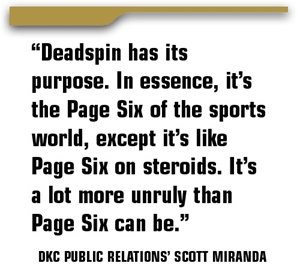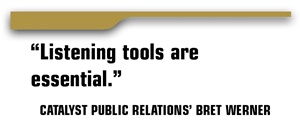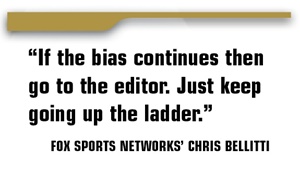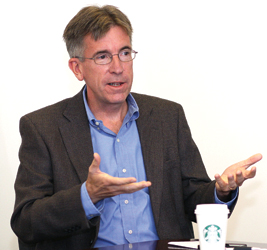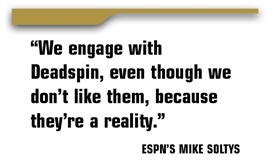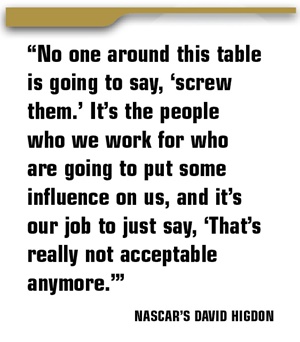The fundamentals of public relations remain the same. It’s all about the message.
Forming it. Shaping it. Delivering it. Responding to it. That is still what communications professionals are charged with doing and expected to master. But how they do that job today is radically different from what it was a decade ago because the wireless world has sped up the delivery of news, facts, rumors and opinions.
In order to understand how the changes are affecting communications officials, we convened a roundtable of six experts in New York earlier this month to talk about the issues they face and how they are dealing with them. We asked executives from leagues, media and agencies to join us, and we touched on everything from media fragmentation and crisis communications to managing negative news and building relationships. Here are excerpts from that conversation, with answers edited for clarity and brevity.
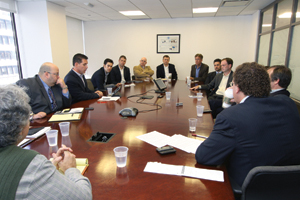 |
ALL PHOTOS BY PATRICK E. MCCARTHY
|
The Spin Doctors
Here are the six individuals who met with the SportsBusiness Journal/Daily editorial team in New York City and the communications projects they have managed in the past 12 months.
Mike Soltys
Title: ESPN, Vice President, Communications
In the last year: Launched ESPN Front Row to cover all things ESPN; oversaw ESPN’s response to college conference realignment; managed communications after Hank Williams Jr. was fired from “Monday Night Football” and the controversy over the Longhorn Network.
Chris Bellitti
Title: Fox Sports Networks, Vice President, Communications
In the last year: Handled crisis communications when FSN lost Los Angeles Lakers rights to Time Warner Cable; managed FSN communication during Los Angeles Dodgers bankruptcy; led response to Dish Network’s decision to drop 19 FSNs.
Bret Werner
Title: Catalyst Public Relations, Managing Partner
In the last year: Expanded the agency’s digital division leading to new programs with clients such as Subway and Timex; conducted a fan engagement study, measuring sports enthusiasts’ habits with digital media; activated PR programs during the Super Bowl, Daytona 500, NBA All-Star Game and ING New York City Marathon.
David Higdon
Title: NASCAR, Managing Director, Integrated Marketing Communications
In the last year: Built out NASCAR’s integrated marketing communications team; released the 2012 NASCAR schedule on Twitter; helped Kentucky Motor Speedway manage communications after traffic crisis.
Scott Miranda
Title: DKC Public Relations, Managing Director, Marketing and Government Affairs
In the last year: Served as agency of record for the U.S. Tennis Association and worked an issue-plagued U.S. Open; worked on business-to-business PR for Yahoo! Sports; managed communications for Citi’s non-Olympic sponsorship, which includes Mets, Cubs, Presidents Cup and Women’s Professional Soccer.
Brian McCarthy
Title: NFL, Vice President of Communications
In the last year: Dealt with league communications during NFL labor negotiations; managed NFL response to weather-related issues from Dallas during Super Bowl XLV; developed communications for the league’s new season launch this year.
Crisis Communication: Accelerated news cycle
demands immediate response
■ You all recently dealt with a crisis PR situation when Hank Williams Jr. made political remarks about President Obama on Fox News. You ultimately let him go. Is there a different scenario, or a different media landscape, where it would have been possible for him to stay on with you?
SOLTYS: From a PR end 20 years ago, when an issue would break locally, we would just hold our breath that the local AP reporter wouldn’t notice it. Then it became, would [SportsBusiness Daily] notice it? That has evolved to now where you know everything is going to be noticed. As soon as we saw the Huffington Post thing — even though it wasn’t connecting it to ESPN — we knew that we had an issue to deal with.
WERNER: You talk about crisis and how swiftly it moves. Listening tools are essential. Consumer conversations and social networks peak in the evenings and on weekends when a lot of businesses close and go home. It truly makes it a 24/7 news cycle and job right now.
BELLITTI: One of the important things to remember is how social media has the potential to really amplify those issues. As Mike said, the Hank Williams thing went unnoticed until Huffington Post grabbed it and the Twitterverse got a hold of it. I was working with Mike at ESPN seven or eight years ago when Rush Limbaugh made comments about Donovan McNabb. That probably took almost a week for the comments to be amplified and then for ESPN to take action. It’s a completely different environment now because of social media.
■ The Super Bowl issue in Dallas stayed in the news for weeks. Is there something you wish you had done differently that might have prevented the story from having such a long life?
McCARTHY: Got the seats done in time [laughing]. Quite frankly. That was a confluence of a once-in-a-lifetime opportunity that we’re still feeling in part because of litigation. If you look back now, it was a time where we did use technology. It did become a sidebar, so we had people working specifically on that issue to react to media, push out our statements. And then we had to come together and do the right thing. And that’s ultimately what the commissioner said: This may cost us money, we’re going to take a PR hit, but we’re going to do the right thing. And that’s ultimately what we did.
WERNER: To add to what Brian said, I think the principles of dealing with a crisis still remain intact, and I think if you’re an organization and you don’t have a great crisis plan in place, you may have a crisis and just not realize it yet, so that’s important. The speed of things has obviously sped up, and you do need to be conscious not to fuel an issue, which can be a very delicate balance. What’s important at those times is the trusted sources you go to. We do an annual fan engagement study, and television is still the most trusted source with sports fans, so I think when you’re going out there and disseminating your message, it’s: What medium am I talking to; What outlet in that medium; and What influencer within there all need to be factored in to consideration. The trust of where the information is coming from is essential.
Fragmentation: PR pros
juggle newspapers, blogs, tweets
■ Talk to us in broad terms about media fragmentation and how it’s changed your day-to-day jobs.
HIGDON: We’re very active on social networks primarily because our fans are. We have rabid fans and we need to proactively keep them involved. Still, there’s a place for the longer pieces, the quality stuff, the stuff that has influences way beyond our world into the decision-makers of sponsorship.
 |
| Miranda describes more and more dealings with online media, depending on the client. |
MIRANDA: More and more as we interact with media every day, we have to broker deals with not only traditional but also online media. Depending on what your angle is and who your client is, you have to deal with certain websites as meticulously as you would with The New York Times or Wall Street Journal because they’ve given themselves that importance and impact. The whole social media landscape has changed the way we do our business.
BELLITTI: In terms of black and white ink on paper, it may be different, but some news organizations just take their operation online. You’re still going to put stories out online and break stories online. It’s really delivery that’s evolving and not the news organizations.
■ In a recent conversation with PR professionals, they said that things had evolved but The New York Times and others still set the agenda. Is that accurate?
WERNER: There’s a huge trickle effect of influential outlets and those influential outlets could be TV, newspapers, online, a consumer or an athlete. There was a long time we just looked at media and then we looked at blogs. Now I look and there are a lot of key influencers who have an incredible trickle effect on additional coverage.
McCARTHY: The way we look at it is that every single person is a wire service. While we hope The New York Times and other newspapers will always have a place in our society from a sports perspective and also a journalism perspective, we have to work with everyone who is out there. We will tell our partners and our executives, this may be a small newspaper story, but it will go viral. The days of holding your hands over your eyes and ears and hoping it won’t go nationwide are over. It lies on us to make sure our executives are prepared for that.
■ Those days are over. When did they end? Was it Twitter? Was it blogs?
McCARTHY: I think it goes back to blogs. The evolution of media has just gotten faster, quicker, more direct.
HIGDON: It all changed when we had to look at who was a journalist and who wasn’t. Now really, what’s the distinctive line between a traditional journalist and somebody who’s expecting news? It’s blurred.
When we released our schedule last week on Twitter, we were engaging with the media, but we were engaging with fans at the same time. It was a blurring of that. The question our executives were answering were from standard NASCAR reporters and Eddie in Peoria.
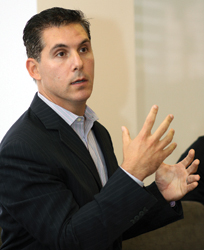 |
The need for a great crisis plan, Werner says, is one thing that hasn’t changed.
|
SOLTYS: The title of “traditional media” is a misnomer at this point. On the Hank Williams story, Michael Hiestand’s piece on USA Today’s “Game On” blog was a lot more impactful to the story than whatever he wrote in the newspaper the next day. I don’t know which readership had a greater audience, but because of the timing, he was the first one that I saw to connect the dots between Hank Williams commenting on Fox and “Monday Night Football.” That, then, sped up the news cycle. The first things in the marketplace help dictate the news. It was the same thing when we announced our “Monday Night Football” extension. What Richard Sandomir wrote online on their blog defined the story more than what he wrote in the newspaper the next day.
■ Certainly you would consider them traditional media.
SOLTYS: I did until a few months ago. What he [Richard Sandomir] immediately puts out, for example with Hank Williams, he put out a First Amendment lawyer questioning Hank’s take on things. That changes the conversation. He writes the same thing that appeared in [Friday’s] New York Times, but he changed the conversation in the middle of the day Thursday by putting that out in the New York Times blog.
McCARTHY: Traditional media? It’s just media. There’s this ambient awareness where everyone is connected through social media. Richard [Sandomir] is a perfect example. He’s a traditional journalist, but where is his material appearing? It’s online. It’s on Twitter. He’ll do video for the Times website. That’s the direction we continue to move in. Opening up the paper the next day is important, but it’s just as important to control the message in real time.
■ How does Deadspin fit into the conversation? It’s a site that you may be uncomfortable working with yet you can’t deny the power of its popularity. How do you work with Deadspin?
BELLITTI: Keep them at arm’s length. We had an issue with them a couple of weeks ago with this video that appeared on Fox Sports. It was obviously offensive to Asian Americans and Deadspin clipped it, put it out there and asked us for comment. That drove the conversation and gave the video life for several more days.
MIRANDA: Deadspin has its purpose. In essence, it’s the Page Six of the sports world, except it’s like Page Six on steroids. It’s a lot more unruly than Page Six can be. But let’s face it: Beat writers utilize Deadspin to write stories that they can’t write in their own publications. It’s a tool for the media as well. Whether we want to admit it or not, it does serve a purpose in the landscape.
■ Have you tried to get things placed on there? Give us an example.
MIRANDA: Delicately, why not? We’ve had various clients that we’ve worked with that have desired to get that kind of reach and we’ve fed them footage. If there’s something that’s controversial that was said in programming, whatever the case may be, we’ve fed them footage and they’ve used it. Knock on wood, it’s never gotten to the point where there’s blowback but it has gotten the message out and amplified it more than it would with a traditional outlet.
The Response: How to handle
the negative and inaccurate
■ Give us your thinking and approach when a negative story hits.
HIGDON: For negative kinds of issues, it’s important that executives understand we have to break the template. It’s changing the mode where you ran a race on Sunday, traveled back on Monday and Tuesday and then you gather together and look at penalties and what just occurred. We actually are educating our executives internally that that’s really no longer acceptable. It delays the opportunities within the media landscape where you might have a Monday, Tuesday, Wednesday where you might have the opportunity to bring some positive stuff out. If there’s some negative things coming out of a race, we’re saying, “Let’s deal with it a lot quicker.” It’s internal education.
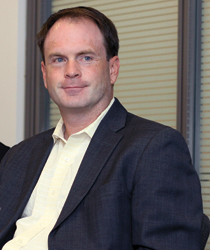 |
| For McCarthy, technology means not having to wait on the news cycle to react. |
McCARTHY: We’ve really become more proactively reactive in the sense that we’re able to use technology to get our message out much more quickly than we’ve ever been able to. For example, back in the old days, which would have been three to five years ago, if The New York Times wrote a story and you wanted a clarification or correction you would have to beg, borrow and plead to get a sentence on B46 that no one would see. Well, now we can read a story in real time, put something out on Twitter, put something out on our own internal website that media see to correct the mistake. So that’s a place where you can use technology to push out your message.
■ Let’s look at that last week of the U.S. Open this year with ticketing issues and the coverage in the New York media. When did you realize that you had an issue that needed to be dealt with?
MIRANDA: With the Open, it’s a two-week event and a number of things evolve during it, some you can control and some you can’t. With the ticketing, unfortunately it could be an issue from the first day. And when we saw the forecast, we knew we would have to prepare for two to three days of this, and the same issues would come up with the roof, and getting that mess fixed.
With ticketing, we pretty much know that’s going to come up on a yearly basis, just like food prices. But we’ve done things to counteract those. For example, if you were to talk about the conversation about food at the U.S. Open five or six years ago, it was about $10 hot dogs, and we changed the conversation over the last five years. Now you’re talking about gourmet food and companies like Moet coming on board, and it being more about tastings. We’ve changed the message in terms of talking about high prices to talking about ambience and a lifestyle, and making it more of a push in that direction. That’s just one effort.
HIGDON: That’s one of the most fundamental things in a lot of sports — golf, tennis, NASCAR — sports that are affected dramatically by weather. It’s always a running joke that if we can get through Wimbledon without much rain then we’ll probably get through without many issues, because when they’re playing, they’re not talking. But now that you have Twitter, as soon as they stop playing and being athletes, they become communicators, so then they start talking and issues start festering.
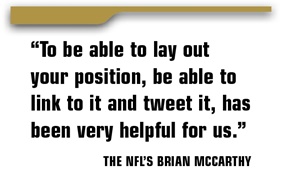 |
What we try to do is anticipate that stuff is going to happen, that there’s going to be a lull, and that’s when you’re holding positive stories, that’s when you have a plan in which you bring some other people into the media center, that you feed the beast per se. If you do not have a plan for when there’s six hours of dead time, that dead time is going to be filled by some good stuff, but realistically a lot of negativity. You really need to be proactive and ready to deal with that and make your executives available. The U.S. Open last year was brutalized by that. The overriding issue is the debate on whether there should be a roof over it or not, so it’s going to come up every single year.
■ In terms of negative stories, is using social media the new way to react to it?
McCARTHY: It’s a matter of proactively reacting, and so it is through Twitter, but there’s also ESPN Front Row [the blog of ESPN’s communications department], and we have our own site. We have NFL.com, which is for the fan. We have NFLmedia.com, which is for media and password protected in part because you can get credentials through there. Then we have NFLcommunications.com, and that’s the place where we will put out statements and fact sheets. To be able to lay out your position, be able to link to it and tweet it, has been very helpful for us versus the old days, which you mentioned was letter to the editor, and it may never get published. So now you’re able to put out a tweet and it helps diffuse and drive the conversation with other media who may see the tweet and back off.
Relationship Management:
Foundation of PR in flux?
■ When it comes to working with reporters, what medium would you use? Would you pick up the phone first or utilize Twitter?
BELLITTI: My thought would be to pick up the phone. But it depends on the situation and how aggressive or unfair the reporter was being, but personally I would pick up the phone first.
WERNER: No matter how much technology advances, there’s an art to a conversation or face-to-face meeting that should never disappear.
SOLTYS: I’m all for the relationships, but if there’s a particular piece of information that’s been put out there by a writer that’s factually incorrect and is immediately taking off, if you don’t put something out to refute it pretty quickly, you have this conversation half an hour later and the damage is done. You’ve got to be right to the point quickly when the issue first surfaces.
■ How has relationship management changed? If there’s an outlet out there hammering you left and right, do you sit down with them or is there a feeling of “screw them”?
BELLITTI: I don’t think you can ever say “screw them.” At least if it has no effect, you can say we tried, we sat down with them, we explained our position. But if you don’t do that then there’s some regret there.
SOLTYS: You have to fight the “screw them” mentality because you have to live to fight another battle and there’s no downside to having a conversation even with an outlet that you feel is very slanted against you. We engage with Deadspin, even though we don’t like them, because they’re a reality. Lots of people read them and they can influence a story. So for us to say, “screw them,” is not smart on our end.
HIGDON: No one around this table is going to say, “screw them.” It’s the people who we work for who are going to put some influence on us, and it’s our job to just say, “That’s really not acceptable anymore.” We’ve got to figure out a way to be better. It’s getting into the layers and making sure you’re not just dealing with the single reporter, who may be worrying about his job, but making sure you deal with all the layers, and that’s a lot of work and energy and phone calls and meetings. I think that’s as important as ever. Even though I said I’m not getting a lot of phone calls, I’m making a lot of phone calls and making a lot more personal visits.
McCARTHY: The concept of freezing out a publication is really mind-boggling. There’s other ways to send a message to a particular reporter if you have a legitimate beef. But we’d rather work with the reporter, to try to educate, try to bring them up to speed, and give us a fair shake, because that’s really all we’re asking. It does come back to relationships, and we may not agree with everything Jay Glazer or [Adam] Schefter will put out there, but we at least have that ability to work with them. We develop those relationships over the years. It comes from late nights, league meetings.
 |
| Bellitti says it’s important to try to sit down and work out a difficult media relationship. |
■ Have you seen the relationship change after you’ve had some of these engagements?
MIRANDA: I’ve seen some change, and some not. It’s case-by-case, but they’re there and ultimately the media has what we want, which is coverage in certain instances. Whether it’s one reporter or another, we’ve got to keep trying and foster those relationships and keep them positive as best as you can.
n What happens when you try to build on a relationship and it goes nowhere?
BELLITTI: Of course it depends on how deep the perceived bias is, but you try sitting down and explaining your position and if the bias continues then go to the editor. Just keep going up the ladder until you get some traction there.
■ What is the biggest frustration in dealing with today’s media?
SOLTYS: I go back to the reaction game. There’s just so little reporting and even the quality reporters are jumping into the reaction game when it’s not their story. We need a little more focus on the reporting aspect to get the information correct because the citizen journalists are going to do their own reacting.
WERNER: I could see where that could work in your behalf, too, but it’s a very fragmented media landscape right now. You need to understand how to navigate the media landscape and who’s reaching which influencers. There’s an incredible passion in North America for sports.
■ And that’s frustrating to you?
WERNER: I think of it as a positive and negative, too. You like the depth of coverage, but it’s not three network channels and one national newspaper anymore. It makes the job much more complex, which is why you’re seeing the communications department at the table with the C-suite now.
MIRANDA: Now with the increase in media there’s more outlets, there’s more change, there’s people changing beats, there’s a lot more people that you have to educate and keep tabs on. While the work isn’t necessarily keeping tabs on people, but making sure they understand, and if they take a negative slant, how are we educating them.
McCARTHY: There is a retweet mentality where reporters won’t dig deep enough to find the facts or simply take it from other people. Other frustrations would be reliance on the same sources, when you see the same people quoted over and over again, but within the real industry, they don’t have that credibility.
Tackling Twitter:
Demands of monitoring new medium rise
■ How much time are you having to spend on a day-to-day basis monitoring internal issues and communication on Twitter?
SOLTYS: We’ve got to spend a substantial amount of time over the span of the hundreds of personalities that we have both on a PR end and an editorial end. A lot of the ESPN editors are expressing frustration on the amount of time they have to spend watching what goes out on the social space. We’re bringing it up in every meeting. We’re doing the best we can to educate everyone to say that Twitter is no different than ESPN.com or ESPN
Radio or where you’re saying things elsewhere. It’s another platform, just not an ESPN-owned platform.
■ Are they better at thinking more before they tweet?
SOLTYS: Yes. Considering the volume of people we have tweeting, there’s not a tremendous amount of problems. Some do come up, and we have to determine how much we’re going to worry about it.
■ How do you monitor? Do you have an intern going through player accounts every day?
McCARTHY: Every team has an outside PR consultant come in and do a program during the preseason that includes social media. It’s important for our players to be out there, but we want them to be smart on how they engage with their fans. It’s a great opportunity for us. We’re seeing it in TV ratings. The ability to have our players engaging, talking with fans is just amazing.
BELLITTI: There’s this tendency to overcomplicate social media and Twitter in particular as it relates to guidelines for talent and making sure they adhere to these strict guidelines. If you start with the premise that these are all professionals and you reinforce the principle that you do not say anything on social media and Twitter in particular that you wouldn’t say to an open mike … that can go a long way to keeping them and the organization out of trouble.
■ Do you think these similar guidelines should apply for league officials?
McCARTHY: We’re fortunate in that the commissioner has told us in public relations and our events department, you should be out there engaging with fans, engaging with media, tracking what’s being said by players, and so we do have our internal social media guidelines, which we continue to review. Which is — don’t say something you wouldn’t feel comfortable saying in front of an editorial boardroom or a group of fans.
■ What level of effort are you having to put in to make sure these concepts happen on a day-to-day basis?
McCARTHY: We at the league monitor player tweets, executive tweets, coaches’ tweets, media. But more importantly it’s also the fan tweets. We leave it up to the teams to discipline the player if he said something that he should not have on Twitter. We give guidelines, like don’t post any competitive-edge type of information that could include an injury report that isn’t made public. And don’t disparage other teams or players. Beyond that, we have a 90-minute rule on game day where players may not tweet 90 minutes before the game to the conclusion of the game. Outside of that we leave it up to the clubs.
■ How has your job changed from the impact of social media?
SOLTYS: I started tweeting 2 1/2 years ago and thought it was the dumbest thing. And have quickly seen from a PR end it’s the most effective tool that we have to deal with media but also the opportunity to deal with influencers.
■ Because of time?
SOLTYS: A lot of media members are two things — they’re information junkies and they’re narcissists. It becomes a very effective way to reach people quickly. Certainly that paid dividends yesterday morning [Oct. 6] in terms of getting our message out on Hank Williams Jr. You then also get lots of people in the media that you frankly wouldn’t have the time to deal with regularly that are following you and then use things off your Twitter account. I saw last week I was quoted on a Florida State fan site and the editor of that apparently follows me. I saw last night I was on The Washington Post, but I didn’t talk to them, it was from what I put on Twitter. You can put things out quickly and efficiently.
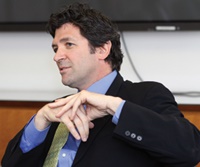 |
| Doing the job, says Higdon, means dealing with all of a media organization’s layers. |
■ Are you OK with that? Do you wish you had gotten a phone call?
HIGDON: We never get any phone calls anymore. It’s pretty shocking. I don’t know about you guys, but it’s very rare that I’m getting phone calls from journalists now. It’s done a lot more through Twitter. Like Mike was saying, if we’re being more proactive and being more aggressive in getting in our messaging then there’s not that delay on getting our comments now. I find that the value of phone calls is diminishing significantly in the last few years.
BELLITTI: And let’s not forget that Twitter is a two-way conversation, so it’s a great platform to communicate your message. It’s also a great platform to listen to the conversation about your brand. I obviously follow a lot of media reporters, and you understand what they’re all thinking because they say it on Twitter. You can monitor that and if you need to react to something they said you can do it. But that two-way conversation is very important.
■ Does anyone have an example of a message on Twitter backfiring?
HIGDON: You put 50 more tweets out and hope it gets buried.
■ During the early part of the NFL CBA talks, there was a lot of sniping going back and forth on Twitter. Was there a point where you said let’s just not engage each other on Twitter anymore?
McCARTHY: It was more of a federal mediator saying stop as it relates to talking about anything related to the meetings, so that was part of it.
■ You’ve been more aggressive and challenging stories on Twitter. What’s the thought process behind that?
SOLTYS: We launched our corporate blog ESPNfrontrow.com in the spring, and part of it is to tell the story behind the scenes at ESPN so we’re not having it told exclusively by others, but part of it is a tool to help us manage issues when they come up. A lot of the conversation on the Longhorn Network and our involvement there just was getting basic information about the story factually incorrect, so we laid out on ESPN Front Row links to news articles that outlined all the different points that were missing. We were able to communicate that, and the next reporter that calls us, we can send a link to that story and say, “Here’s a very detailed rundown of how this story actually unfolded.” We’re able to use our corporate blog to accomplish that, and it’s part of the strategy on anything.
WERNER: The key is that the new mediums have allowed brands to tell their own stories. A brand can talk about how they’re supporting a sponsorship, how they’re doing cause-related work, whatever initiative they want, brands need to be their own disseminators of content, and you’re seeing a lot more of that.
■ Are these micro-sized blogs the way of the future? Is everybody going to have that?
BELLITTI: We don’t have any plans at the moment, but that’s not to say we wouldn’t consider it down the road. It could be an effective tool, but it’s not a cure-all. Let’s not lose sight of, while you can broadcast your message on Twitter and you can have a corporate blog to put your message out there, hand-to-hand combat is still fairly effective. Engage your reporter one-on-one who you may think is treating you unfairly, and try to drill down to what his issues are and what any perceived biases might be. That’s still very important.
■ Does Facebook have as much of an influence on business?
BELLITTI: From a corporate standpoint, Facebook is less important, but for regional businesses Facebook is extremely important. Fox Sports Detroit probably has more than 45,000 followers, and in the Tigers-Yankees series going into the Rangers series there was constant conversation on Fox Sports Detroit’s Facebook page about the team and what’s going on, and we actively engage the fans, and some of our posts have 500-600 comments in reactions. So on a regional standpoint, Facebook is very important.
WERNER: With Twitter, no one is going to doubt the influence, and it most highly connects with college sports fans. But looking at three to five years in digital is eternity. We’re looking at 2012 in seeing high indexing of location-based services with the sports fans. So probably the one question I get asked the most is, “What’s next? What is the next Twitter?” I get that question constantly. So three to five years is a very long time in the digital space. But I think things like location-based services will change things, and you’ll see a lot of things evolve in the next one to two years.
HIGDON: We all have our key influences and we need to adjust to that. What are the outlets that affect our business decisions? We have a fan counsel that we review the data after every one of our races, but that data is mostly based off of the hard-core fans. When we make business decisions, we can’t rely solely on that. You have to find balance. That’s where all the people here adjusted from being PR people to marketing communications people to something much greater.
WERNER: I will say there’s an obsession with Facebook and Twitter on the amount of followers, which really isn’t a great metric. It’s about engagement — isn’t that what every brand wants to do, engage their consumers? So metrics like stickiness and interaction are essential, and as marketers we need to move away from number of followers and number of fans. It’s really a poor metric.




